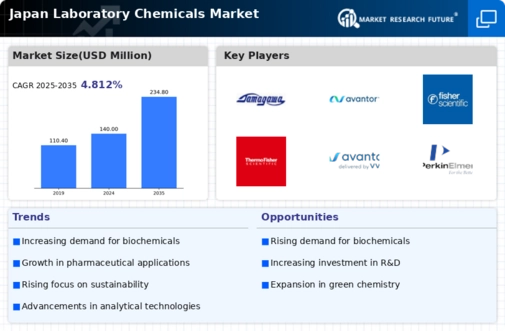The Japan Laboratory Chemicals Market is characterized by a dynamic competitive landscape driven by the increasing demand for advanced research and analytical techniques across various sectors, including pharmaceuticals, biotechnology, food and beverage testing, and environmental analysis. The market has witnessed significant growth due to the rapid advancements in laboratory technology and the growing emphasis on quality control and precision in scientific research. Additionally, the market is shaped by both domestic manufacturers and international companies that strive to strengthen their foothold through strategic partnerships, product innovation, and expanded distribution networks.
This competitive interplay is essential for understanding the strategic moves of key players and the overall market evolution.Hirschmann Laborgeräte holds a significant position in the Japan Laboratory Chemicals Market, leveraging its strengths in high-quality laboratory equipment and a strong dedication to innovation and customer service. The company is known for its efficient delivery systems, which ensure that customers receive products in a timely manner while maintaining top-tier quality standards. In addition to this, Hirschmann Laborgeräte has established a robust distribution network within Japan that allows them to cater to different sectors, including academia and industrial research.
Their continuous investment in research and development has enabled them to introduce novel solutions tailored to meet the specific demands of Japanese laboratories, reinforcing their competitive advantage in the market.Tamagawa Seiki also plays a pivotal role in the Japan Laboratory Chemicals Market by offering a wide range of laboratory chemicals and related products. The company is recognized for its strong market presence and innovative offerings, which include high-purity chemicals essential for advanced analytical processes. Tamagawa Seiki’s commitment to quality is evident in its rigorous testing and production standards, making it a preferred choice among various research institutions and industries.
They have engaged in strategic mergers and acquisitions to enhance their product portfolio and expand their reach within Japan, thereby solidifying their market position. Their strengths lie in developing reliable and efficient laboratory solutions that address specific customer needs, contributing to Tamagawa Seiki's reputation as a key player in the region's laboratory chemicals market.



















